Themed collection In celebration of Tony Cheetham’s 70th birthday

Flexibility and disorder in metal–organic frameworks
Welcome to this themed issue of Dalton Transactions entitled ‘Flexibility and Disorder in Metal–Organic Frameworks’.

Dalton Trans., 2016,45, 4058-4059
https://doi.org/10.1039/C6DT90026G
Organised chaos: entropy in hybrid inorganic–organic systems and other materials
Entropy is one of the fundamental quantities which links emerging research areas like flexibility and defect engineering in inorganic–organic hybrid materials. Here, we highlight the role of entropy in the past and discuss how computational methods can help us to understand entropic effects in inorganic–organic hybrid materials in the future.
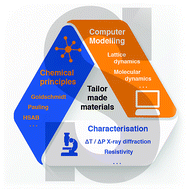
Chem. Sci., 2016,7, 6316-6324
https://doi.org/10.1039/C6SC02199A
Defects and disorder in metal organic frameworks
The wide-ranging properties of metal organic frameworks (MOFs) rely in many cases on the presence of defects within their structures and the disorder that is inevitably associated with such defects.

Dalton Trans., 2016,45, 4113-4126
https://doi.org/10.1039/C5DT04392A
Structural diversity and chemical trends in hybrid inorganic–organic framework materials
We examine the emerging chemical and structural trends in the field of inorganic–organic framework structures and discuss some of the nascent applications of this vast and exciting class of materials.
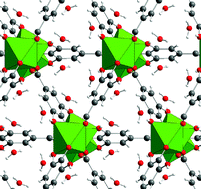
Chem. Commun., 2006, 4780-4795
https://doi.org/10.1039/B610264F
Carbon-assisted synthesis of inorganic nanowires
Highlights of the recent results on the carbon-assisted synthesis of inorganic nanowires are presented. The illustration shows SEM images of nanowires of (a) Al2O3 and (b) AlN produced by carbon-assisted synthesis.
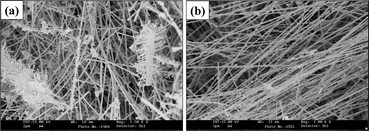
J. Mater. Chem., 2004,14, 440-450
https://doi.org/10.1039/B310387K
Science and technology of nanomaterials: current status and future prospects
J. Mater. Chem., 2001,11, 2887-2894
https://doi.org/10.1039/B105058N
Mechanical properties of hybrid inorganic–organic framework materials: establishing fundamental structure–property relationships
Establishing the fundamental structure–mechanical properties relationships in metal–organic frameworks (MOFs) and dense hybrids is central to the design, optimization and implementation of this new class of materials.
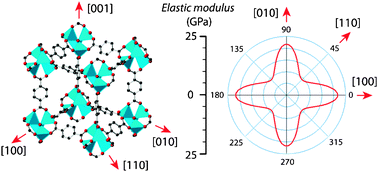
Chem. Soc. Rev., 2011,40, 1059-1080
https://doi.org/10.1039/C0CS00163E
Functional conductive nanomaterials via polymerisation in nano-channels: PEDOT in a MOF
Poly(3,4-ethylenedioxythiophene) (PEDOT) is formed inside a metal–organic framework (MOF). MOF removal leads to sub-millimetre structures of the nanostructured conducting polymer.
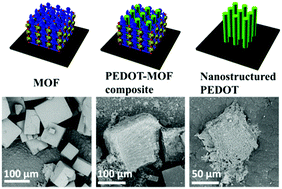
Mater. Horiz., 2017,4, 64-71
https://doi.org/10.1039/C6MH00230G
Liquid exfoliation of alkyl-ether functionalised layered metal–organic frameworks to nanosheets
Dispersion of the nanosheets exposes labile metal-sites which are shown to exchange solvent molecules allowing the nanosheets to act as sensors in suspension.

Chem. Commun., 2016,52, 10474-10477
https://doi.org/10.1039/C6CC05154E
Exploring the properties of lead-free hybrid double perovskites using a combined computational-experimental approach
Density functional theory screening of the hybrid double perovskites (MA)2BIBiX6 (BI = K, Cu, Ag, Tl; X = Cl, Br, I) was performed and (MA)2TlBiBr6, isoelectronic with MAPbBr3, was synthesised and found to have a band gap of ∼2.0 eV.
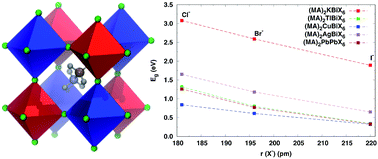
J. Mater. Chem. A, 2016,4, 12025-12029
https://doi.org/10.1039/C6TA05817E
The synthesis, structure and electronic properties of a lead-free hybrid inorganic–organic double perovskite (MA)2KBiCl6 (MA = methylammonium)
A Bi-based double perovskite provides a suitable approach to search for lead-free alternatives for photovoltaics.
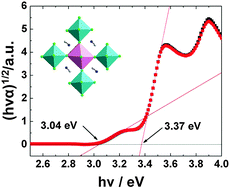
Mater. Horiz., 2016,3, 328-332
https://doi.org/10.1039/C6MH00053C
Porosity in metal–organic framework glasses
The porosity of a glass formed by melt-quenching a metal–organic framework, has been characterized by positron annihilation lifetime spectroscopy.
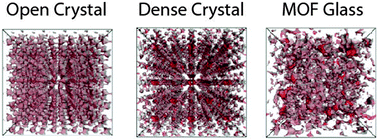
Chem. Commun., 2016,52, 3750-3753
https://doi.org/10.1039/C5CC10072K
Role of entropic effects in controlling the polymorphism in formate ABX3 metal–organic frameworks
Polymorphism in formate-based dense metal–organic frameworks with the general formula ABX3 is predicted by quantum chemical calculations and confirmed experimentally.
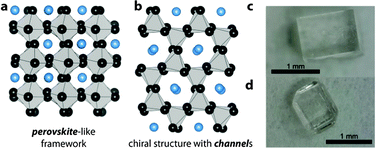
Chem. Commun., 2015,51, 15538-15541
https://doi.org/10.1039/C5CC06190C
Amorphous metal–organic frameworks for drug delivery
We show controlled release over a 30 day period compared with the release from crystalline MOF, which occurs in less than 2 days.
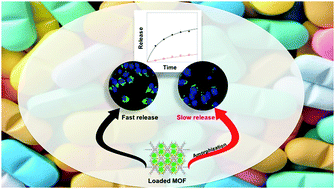
Chem. Commun., 2015,51, 13878-13881
https://doi.org/10.1039/C5CC05237H
Role of hydrogen-bonding and its interplay with octahedral tilting in CH3NH3PbI3
Computed Kohn–Sham energies as a function of torsion angle for three rotational modes of the methylammonium group in orthorhombic CH3NH3PbI3.
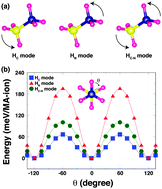
Chem. Commun., 2015,51, 6434-6437
https://doi.org/10.1039/C5CC00979K
Topotactic elimination of water across a C–C ligand bond in a dense 3-D metal–organic framework
Owing to its thermal stability and structural flexibility, the original 3-D framework of lithium L-malate remains intact upon topotactic dehydration.

Chem. Commun., 2014,50, 13292-13295
https://doi.org/10.1039/C4CC06136E
Cobalt adipate, Co(C6H8O4): antiferromagnetic structure, unusual thermal expansion and magnetoelastic coupling
Anisotropic negative thermal expansion, driven by magnetoelastic coupling, has been found in cobalt adipate and interpreted through understanding its antiferromagnetic structure.
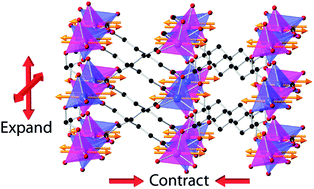
Mater. Horiz., 2014,1, 332-337
https://doi.org/10.1039/C4MH00009A
Layered structures and nanosheets of pyrimidinethiolate coordination polymers
A lamellar pyrimidinethiolate coordination polymer has been exfoliated to form nanosheets and found to be electronically insulating.
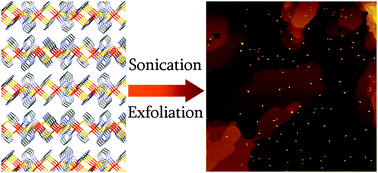
Chem. Commun., 2014,50, 3955-3957
https://doi.org/10.1039/C4CC00771A
Topotactic reduction of oxide nanomaterials: unique structure and electronic properties of reduced TiO2 nanoparticles
Topotactic reactions can create nanomaterials having unique structure and properties that cannot be realized in bulk materials.
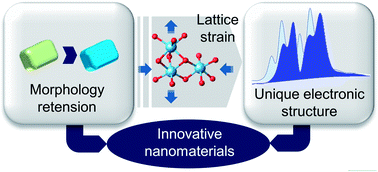
Mater. Horiz., 2014,1, 106-110
https://doi.org/10.1039/C3MH00087G
Mechanical properties of a metal–organic framework containing hydrogen-bonded bifluoride linkers
The robustness of F–H⋯F hydrogen bonds within bifluoride of a framework structure is probed via nanoindentation.
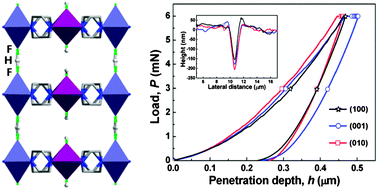
Chem. Commun., 2013,49, 4471-4473
https://doi.org/10.1039/C3CC41357H
Carbon with hierarchical pores from carbonized metal–organic frameworks for lithium sulphur batteries
This paper presents utilization of carbonized metal–organic frameworks for sulphur loading to fabricate cathode structures for lithium–sulphur batteries.
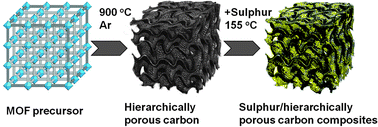
Chem. Commun., 2013,49, 2192-2194
https://doi.org/10.1039/C3CC38009B
Amorphization of the prototypical zeolitic imidazolate framework ZIF-8 by ball-milling
Ball-milling induced amorphization of the prototypical substituted zeolitic imidazolate framework ZIF-8 results in a less porous framework, adopting a continuous random network topology.
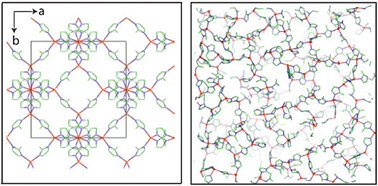
Chem. Commun., 2012,48, 7805-7807
https://doi.org/10.1039/C2CC33773H
Influence of ligand field stabilization energy on the elastic properties of multiferroic MOFs with the perovskite architecture
The mechanical properties of isostructural MOFs adopting the perovskite ABX3 topology are strongly correlated to the ligand field stabilization energy.

Dalton Trans., 2012,41, 3949-3952
https://doi.org/10.1039/C2DT12300B
Comparison of the relative stability of zinc and lithium-boron zeolitic imidazolate frameworks
We show that dispersive interactions are an essential component in modelling zeolitic imidazolate frameworks and compare Zn-ZIFs to their LiB-ZIFs analogues.
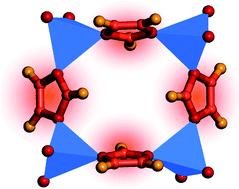
CrystEngComm, 2012,14, 374-378
https://doi.org/10.1039/C1CE05854A
Reversible pressure-induced amorphization of a zeolitic imidazolate framework (ZIF-4)
High pressure, synchrotron X-ray studies of a zeolitic imidazolate framework reveal a new high pressure phase followed by reversible amorphization.
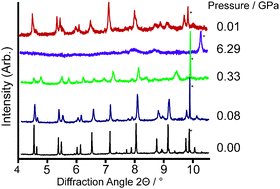
Chem. Commun., 2011,47, 7983-7985
https://doi.org/10.1039/C1CC11985K
Efficient white light emission by upconversion in Yb3+-, Er3+- and Tm3+-doped Y2BaZnO5
We report efficient white upconversion luminescence in Y2BaZnO5-based phosphors under near-infrared excitation and at low excitation power densities.
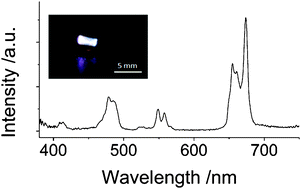
Chem. Commun., 2011,47, 6263-6265
https://doi.org/10.1039/C1CC11427A
Zeolitic imidazole frameworks: structural and energetics trends compared with their zeolite analogues
Simulated crystal structure of the zeolitic imidazole framework (ZIF) with the topology of the LTL-type zeolite.
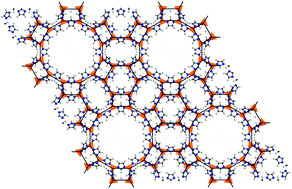
CrystEngComm, 2009,11, 2272-2276
https://doi.org/10.1039/B912997A
Enhanced H2 adsorption enthalpy in the low-surface area, partially fluorinated coordination polymer Zn5(triazole)6(tetrafluoroterephthalate)2(H2O)2·4H2O
A novel porous coordination polymer displays a high physisorptive H2 adsorption enthalpy of 8 kJ/mol, due to fluorine atoms exposed to the pore surface and the structure's small pore size

J. Mater. Chem., 2009,19, 4307-4309
https://doi.org/10.1039/B900879A
Structural and chemical complexity in multicomponent inorganic–organic framework materials
We report the structures of a family of bimetallic 4- and 5-component coordination polymers of Cu and Zn with 5-hydroxyisophthalic acid, 4,4′-bipyridyl and oxalate, in which the metals and ligands occupy distinct sites.
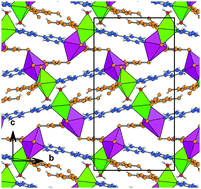
CrystEngComm, 2009,11, 980-985
https://doi.org/10.1039/B820718F
Thermodynamic and kinetic factors in the hydrothermal synthesis of hybrid frameworks: zinc 4-cyclohexene-1,2-dicarboxylates
Experimental and computational observations indicate that the formation of zinc 4-cyclohexene-1,2-dicarboxylates proceeds largely under thermodynamic control.
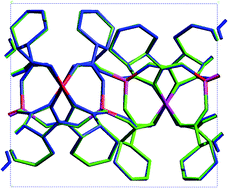
Chem. Commun., 2006, 2687-2689
https://doi.org/10.1039/B603512D
A thermally stable nanoporous nickel 5-sulfoisophthalate ; crystal structure and adsorption properties
A nanoporous nickel coordination polymer demonstrates the utility of 5-sulfoisophthlate as a ligand for the synthesis of new hybrid systems.
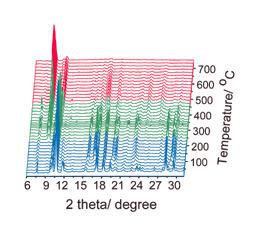
Chem. Commun., 2004, 2148-2149
https://doi.org/10.1039/B408535C
The role of temperature in the synthesis of hybrid inorganic–organic materials: the example of cobalt succinates
Five unique structures of cobalt succinate may be prepared from one starting mixture simply by varying the synthesis temperature. The changes in bonding and composition for structures illustrate the important role of temperature in hybrid materials synthesis.
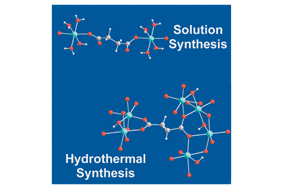
Chem. Commun., 2004, 368-369
https://doi.org/10.1039/B311156C
Synthesis of open-framework zinc phosphates from organophosphorus amides
Open-framework zinc phosphates are typically made in the presence of amines and phosphoric acid. However, novel architectures can be created by using organophosphorus amides as a single source of amine and phosphorus.
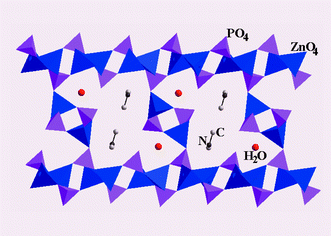
Chem. Commun., 2002, 1738-1739
https://doi.org/10.1039/B205557K
A new route for the synthesis of open-framework metal phosphates using organophosphates
Chem. Commun., 2001, 2716-2717
https://doi.org/10.1039/B107898B
Catalytic conversion of
Chem. Commun., 2001, 859-860
https://doi.org/10.1039/B009160J
The hybrid open-framework of
Chem. Commun., 2000, 2277-2278
https://doi.org/10.1039/B006511K
Tuneable mechanical and dynamical properties in the ferroelectric perovskite solid solution [NH3NH2]1−x[NH3OH]xZn(HCOO)3
We report how mechanical and dynamical properties in formate-based perovskites can be manipulated by the preparation of an A-site solid-solution.
![Graphical abstract: Tuneable mechanical and dynamical properties in the ferroelectric perovskite solid solution [NH3NH2]1−x[NH3OH]xZn(HCOO)3](/en/Image/Get?imageInfo.ImageType=GA&imageInfo.ImageIdentifier.ManuscriptID=C6SC01247G&imageInfo.ImageIdentifier.Year=2016)
Chem. Sci., 2016,7, 5108-5112
https://doi.org/10.1039/C6SC01247G
An extended Tolerance Factor approach for organic–inorganic perovskites
Tolerance Factors of possible hybrid perovskites are calculated for over 2500 amine-metal-anion permutations of the periodic table.
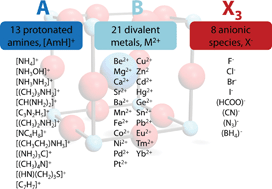
Chem. Sci., 2015,6, 3430-3433
https://doi.org/10.1039/C5SC00961H
Topochemical conversion of a dense metal–organic framework from a crystalline insulator to an amorphous semiconductor
A dense, insulating metal–organic framework (MOF), is successfully converted into a semiconducting amorphous MOF via a topochemical route.
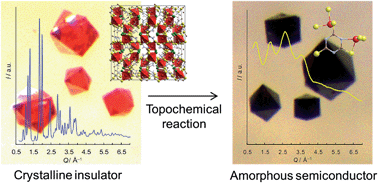
Chem. Sci., 2015,6, 1465-1473
https://doi.org/10.1039/C4SC03295K
Solid-state principles applied to organic–inorganic perovskites: new tricks for an old dog
The concept of tolerance factors is applied quantitatively to hybrid inorganic–organic materials that adopt perovskite-like architectures.

Chem. Sci., 2014,5, 4712-4715
https://doi.org/10.1039/C4SC02211D
Guest-dependent mechanical anisotropy in pillared-layered soft porous crystals – a nanoindentation study
Single-crystal nanoindentation performed on a series of soft porous crystals reveals highly anisotropic mechanical properties of these frameworks as a function of the network geometry.
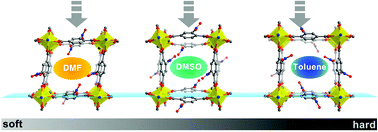
Chem. Sci., 2014,5, 2392-2397
https://doi.org/10.1039/C4SC00497C
Hierarchical bicontinuous porosity in metal–organic frameworks templated from functional block co-oligomer micelles
Hierarchical and thermally stable bicontinuous metal–organic frameworks were synthesized by using self-assembled functional block co-oligomer micelle templates.
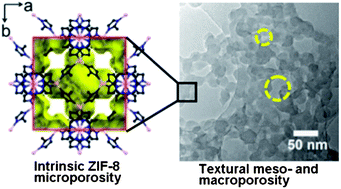
Chem. Sci., 2013,4, 3573-3577
https://doi.org/10.1039/C3SC51336J
Hybridizing photoactive zeolites with graphene : a powerful strategy towards superior photocatalytic properties
Graphene is employed to create a new class of photocatalysts that truly advances semi-conductor photocatalysis to its next generation.
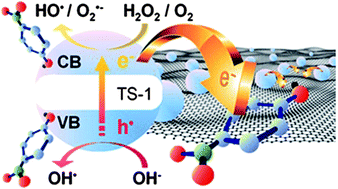
Chem. Sci., 2012,3, 209-216
https://doi.org/10.1039/C1SC00511A
Evolution of the structures and magnetic properties of the manganese dicarboxylates, Mn2(CO2(CH2)nCO2)(OH)2 and Mn4(CO2(CH2)nCO2)3(OH)2
The effect of ligand length on two families of dense frameworks, several incorporating highly unusual MnO5 trigonal bipyramids, is explored and the high magnetic ordering temperature of one of these is discussed.

Chem. Sci., 2011,2, 1929-1939
https://doi.org/10.1039/C1SC00253H
A first-principles study of pressure-induced phase transformation in a rare-earth formate framework
The reversible pressure-induced phase transformation associated with bond rearrangement in a rare-earth formate framework was explored using first-principles calculations, which complement and help understand its experimental observations.
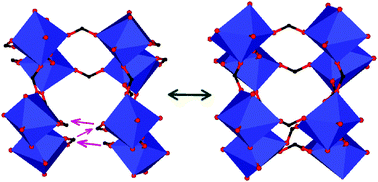
Phys. Chem. Chem. Phys., 2016,18, 19032-19036
https://doi.org/10.1039/C6CP03028A
Disorder and polymorphism in Cu(II)-polyoxometalate complexes: [Cu1.5(H2O)7.5PW12O40]·4.75H2O, cis- & trans-[Cu2(H2O)10SiW12O40]·6H2O
Three highly crystalline Cu(II)-polyoxometalate (POM) complexes, [Cu1.5(H2O)7.5PW12O40]·4.75H2O and cis- and trans-[Cu2(H2O)10SiW12O40]·6H2O, were successfully synthesized and characterized by single crystal and powder X-ray diffraction as well as thermogravimetric analysis.
![Graphical abstract: Disorder and polymorphism in Cu(ii)-polyoxometalate complexes: [Cu1.5(H2O)7.5PW12O40]·4.75H2O, cis- & trans-[Cu2(H2O)10SiW12O40]·6H2O](/en/Image/Get?imageInfo.ImageType=GA&imageInfo.ImageIdentifier.ManuscriptID=C5CE02088C&imageInfo.ImageIdentifier.Year=2016)
CrystEngComm, 2016,18, 5327-5332
https://doi.org/10.1039/C5CE02088C
Transition metal coordination complexes of chrysazin
Eleven novel coordination compounds, composed of chrysazin (1,8-dihydroxyanthraquinone) and different first-row transition metals (Fe, Co, Ni, Cu), were synthesised and the structures determined by single-crystal X-ray diffraction.
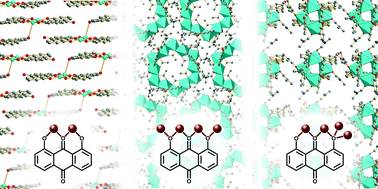
CrystEngComm, 2016,18, 5121-5129
https://doi.org/10.1039/C5CE00792E
Magnetic catalysts as nanoactuators to achieve simultaneous momentum-transfer and continuous-flow hydrogen production
A catalytically active and super paramagnetic Co–carbon–rGO composite was synthesized and used as a nanoactuator to achieve simultaneous momentum-transfer and hydrolysis of NaBH4 or H3NBH3 for hydrogen production.
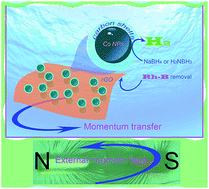
J. Mater. Chem. A, 2016,4, 4280-4287
https://doi.org/10.1039/C5TA10697D
A comparison of the amorphization of zeolitic imidazolate frameworks (ZIFs) and aluminosilicate zeolites by ball-milling
Amorphization of zeolitic imidazolate frameworks during ball-milling is much more rapid than that of aluminosilicate zeolites.
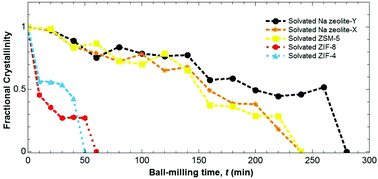
Dalton Trans., 2016,45, 4258-4268
https://doi.org/10.1039/C5DT03477A
Mixed-linker solid solutions of functionalized pillared-layer MOFs – adjusting structural flexibility, gas sorption, and thermal responsiveness
Structural flexibility in pillared-layer metal–organic frameworks can be controlled via the concept of mixed-linker solid solutions.
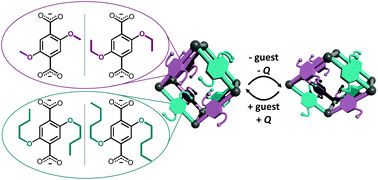
Dalton Trans., 2016,45, 4230-4241
https://doi.org/10.1039/C5DT03825A
Coordination environments and π-conjugation in dense lithium coordination polymers
A weak relationship between the longest C–O bond in an anionic organic ligand and the shortest Li–O bond was found.
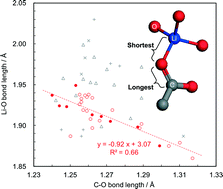
CrystEngComm, 2016,18, 398-406
https://doi.org/10.1039/C5CE01658D
Nanofiller-tuned microporous polymer molecular sieves for energy and environmental processes
Incorporating nanofillers into thermal-oxidatively crosslinked polymers of intrinsic microporosity (PIM-1) generates highly permeable and selective molecular sieves for gas separations.

J. Mater. Chem. A, 2016,4, 270-279
https://doi.org/10.1039/C5TA09060A
Structural investigation of Na3NpO4 and Na3PuO4 using X-ray diffraction and 237Np Mössbauer spectroscopy
The crystal structures of Na3NpO4 and Na3PuO4 have been solved for the first time ab initio, and the pentavalence of the neptunium cation has been confirmed using Mössbauer spectroscopy.
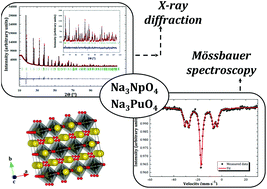
Dalton Trans., 2015,44, 18370-18377
https://doi.org/10.1039/C5DT02168E
Combined experimental and computational NMR study of crystalline and amorphous zeolitic imidazolate frameworks
High resolution 13C and 15N CP MAS NMR spectra of ZIF-4, ZIF-8 and ZIF-zni are assigned on the basis of DFT calculations on the geometry-optimized structures.
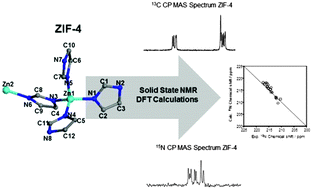
Phys. Chem. Chem. Phys., 2015,17, 25191-25196
https://doi.org/10.1039/C5CP02552D
Mechanical properties of organic–inorganic halide perovskites, CH3NH3PbX3 (X = I, Br and Cl), by nanoindentation
Trends in the Young's Modulus and Hardness for the hybrid perovskites CH3NH3PbX3 (X = I, Br and Cl) are assessed in relation to the underlying chemical bonding.
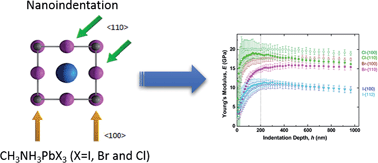
J. Mater. Chem. A, 2015,3, 18450-18455
https://doi.org/10.1039/C5TA03331D
Deep red emission in Eu2+-activated Sr4(PO4)2O phosphors for blue-pumped white LEDs
The deep red phosphor Sr4(PO4)2O:Eu2+, which has an excitation peak around 450 nm for blue LED applications, is reported.
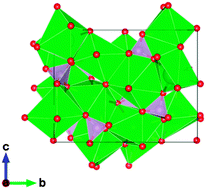
J. Mater. Chem. C, 2015,3, 7356-7362
https://doi.org/10.1039/C5TC01151E
Elastic properties and acoustic dissipation associated with a disorder–order ferroelectric transition in a metal–organic framework
Elastic properties and acoustic dissipation associated with the disorder–order ferroelectric transition in a single crystal metal–organic framework (MOF), [NH4][Zn(HCOO)3], have been investigated using resonant ultrasound spectroscopy (RUS) in the temperature range between 10 K and 300 K.
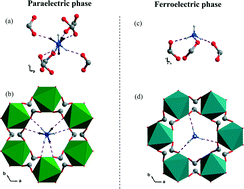
CrystEngComm, 2015,17, 370-374
https://doi.org/10.1039/C4CE01386G
Synthesis, structure and optical properties of cerium-doped calcium barium phosphate – a novel blue-green phosphor for solid-state lighting
A new blue-green phosphor, Ca6BaP4O17:Ce3+, which can be prepared by conventional solid-state synthesis, is reported as a candidate phosphor for solid-state lighting with near-ultraviolet LEDs.
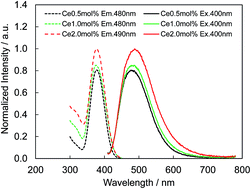
J. Mater. Chem. C, 2015,3, 204-210
https://doi.org/10.1039/C4TC01835D
Intrinsic and extrinsic proton conductivity in metal-organic frameworks
Hydrated interparticle phases are considered to make a considerable contribution to proton conduction in many metal-organic frameworks.
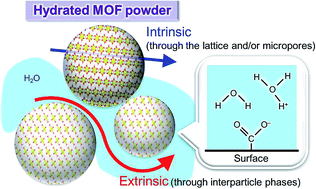
RSC Adv., 2014,4, 54382-54387
https://doi.org/10.1039/C4RA11473F
Synthesis, structure and optical properties of europium doped calcium barium phosphate – a novel phosphor for solid-state lighting
A new phase, Ca6BaP4O17, was found in the CaO–BaO–P2O5 phase diagram and its Eu2+-doped derivative was evaluated as a possible phosphor for solid-state lighting.
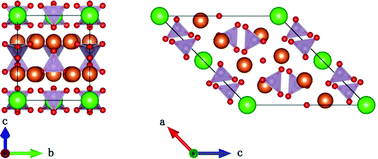
J. Mater. Chem. C, 2014,2, 6084-6089
https://doi.org/10.1039/C4TC00732H
Coordination polymers of alkali metal trithiocyanurates: structure determinations and ionic conductivity measurements using single crystals
Potassium and rubidium trithiocyanurate crystals exhibit proton conductivities, which are discussed on the basis of their crystal structures.
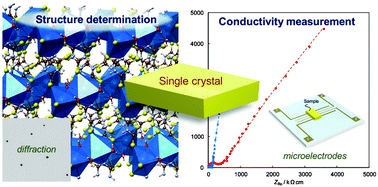
CrystEngComm, 2013,15, 9400-9407
https://doi.org/10.1039/C3CE41150H
Computational studies on the adsorption of CO2 in the flexible perfluorinated metal–organic framework zinc 1,2-bis(4-pyridyl)ethane tetrafluoroterephthalate
Two distinct adsorption sites and “breathing” within the flexible fluorinated MOF Znbpetpa are found through computational methods.
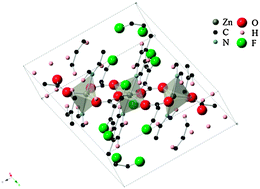
Phys. Chem. Chem. Phys., 2013,15, 176-182
https://doi.org/10.1039/C2CP43093B
Structural diversity and luminescent properties of lanthanide 2,2- and 2,3-dimethylsuccinate frameworks
The origins of structural diversity of fourteen rare earth frameworks, exhibiting one, two and three dimensional connectivity, are explored and the luminescent properties of low dimensional frameworks described.
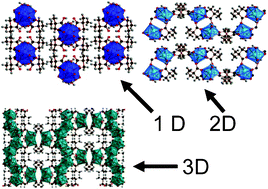
CrystEngComm, 2013,15, 100-110
https://doi.org/10.1039/C2CE26279G
Zeolitic imidazolate framework (ZIF-8) based polymer nanocomposite membranes for gas separation
As-synthesised zeolitic imidazolate framework (ZIF-8) nanocrystals were dispersed into a polymer matrix forming nanocomposite membranes with enhanced gas permeability.
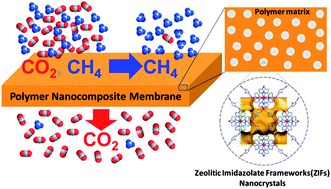
Energy Environ. Sci., 2012,5, 8359-8369
https://doi.org/10.1039/C2EE21996D
Layered inorganic–organic frameworks based on the 2,2-dimethylsuccinate ligand : structural diversity and its effect on nanosheet exfoliation and magnetic properties
A family of layered frameworks has been created in which the topological diversity affects the size of nanosheets obtained by exfoliation; their layered structures support strongly coupled two-dimensional antiferromagnets.
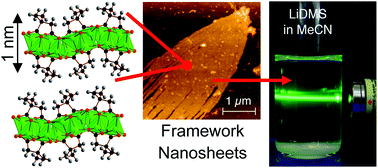
Dalton Trans., 2012,41, 8585-8593
https://doi.org/10.1039/C2DT30648D
Structures and magnetic properties of Mn and Co inorganic–organic frameworks with mixed linear dicarboxylate ligands
The first transition metal frameworks containing two distinct linear dicarboxylate ligands are described and are antiferromagnets, which undergo different transitions with increasing applied field.
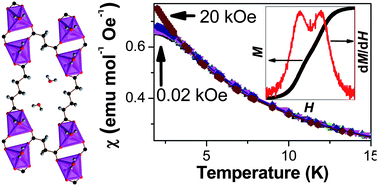
CrystEngComm, 2012,14, 2711-2720
https://doi.org/10.1039/C2CE05947A
Bismuth 2,6-pyridinedicarboxylates: Assembly of molecular units into coordination polymers , CO2 sorption and photoluminescence
1- and 3-D coordination polymers containing monomeric bismuth–pyridinedicarboxylate units and lithium cations have been synthesized. Their gas sorption and photoluminescence properties have been described.
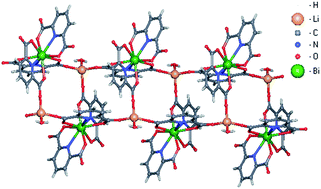
Dalton Trans., 2012,41, 4126-4134
https://doi.org/10.1039/C2DT12330D
A 2D homochiral inorganic–organic framework exhibiting a spin–flop transition
A 2D homochiral framework {[Mn(NPTA)(4,4′-bpy)(H2O)]·(H2O)2}n exhibits a spin–flop transition with a critical field of 23.6 kOe at 1.9 K.
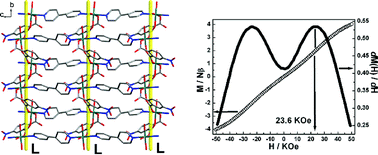
Dalton Trans., 2011,40, 7147-7152
https://doi.org/10.1039/C0DT01686A
Detailed investigations of phase transitions and magnetic structure in Fe(III), Mn(II), Co(II) and Ni(II) 3,4,5-trihydroxybenzoate (gallate) dihydrates by neutron and X-ray diffraction
The magnetic structure, hydrogen positions and cation valency of the transition metal gallates were elucidated using neutron diffraction, in conjunction with synchrotron techniques.
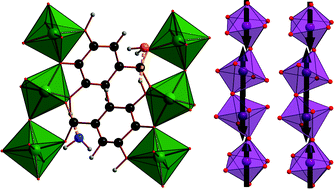
Dalton Trans., 2011,40, 6401-6410
https://doi.org/10.1039/C0DT01687J
Understanding ligand -centred photoluminescence through flexibility and bonding of anthraquinone inorganic–organic frameworks
Five novel inorganic–organic frameworks based on anthraquinone dicarboxylic acid are presented and their photoluminescent properties investigated. The relationship between ligand flexibility and temperature dependent photoluminescence is examined.
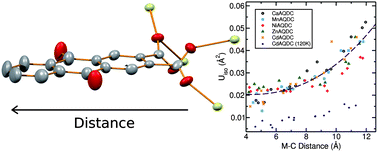
J. Mater. Chem., 2011,21, 6595-6601
https://doi.org/10.1039/C0JM03907A
About this collection
Tony Cheetham has been an important leader in the materials chemistry community for many years now. On the occasion of his 70th birthday we honour his significant contribution to science – in this web collection we bring together more than 120 papers that have been authored or co-authored by Tony and published in the journals of the Royal Society of Chemistry. These papers cover a huge range of topics within the fields of materials and inorganic chemistry. The sheer breadth of content gives a good idea of the innovative thinking and forward-looking approach to research that has marked Tony’s career since he began his research as a DPhil student at the University of Oxford in the late 1960s.
After a period of postdoctoral research at Harwell, Tony took up a lecturer position in Oxford. In 1992, Tony took up the directorship of the new Materials Research Laboratory at the University of California Santa Barbara (UCSB), which he led for 12 years. He became Director of the newly created International Center for Materials Research at UCSB in 2004, before moving to Cambridge in 2007 to become the Goldsmiths’ Professor of Materials Science. He has held several other positions during his career, including the Chief Scientific Advisor for Unilever.
Tony has won many prizes over the course of his career and is an elected Fellow of several international academies. He is currently the Treasurer and Vice-President of the Royal Society in London.
His scientific excellence is matched only by the outstanding mentorship he has provided for the numerous students, postdoctoral researchers and colleagues he has worked with over the years. The impact that Tony has had on the chemistry landscape is phenomenal.
We hope that you will join us in (re)reading his prolific scientific output in this web collection of his RSC publications.
Russell Morris, University of St Andrews
Paul Attfield, University of Edinburgh